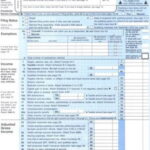In most states, if you are facing a driving suspension, you are automatically given a thirty-day “grace” period in which you can drive until that period is up or your court date arrives. In some states, however, you have to purchase what is called an “eye bond.” An eye bond is insurance you purchase to allow you to get out of jail and keep driving up and until your court date, at which point whatever penalty is assessed is applied.
When a person has too many convictions or penalties assessed to their record, or when they commit what is considered an “aggravated” offense, their license to drive can be suspended pending their court date and, in some cases, suspended immediately. These types of infractions usually encumber “outrageous abuse,” such as exceeding the speed limit by more than 25 MPH, reckless driving that puts pedestrians or other drivers and passengers at risk of injury or death, and cases in which the person exceeds double the legally permitted allowance for operating a vehicle under the influence of drugs or alcohol. When a person is charged with these types of infractions, they are almost always brought to jail for processing.
To get out of jail, they have to post bail to a bail bondsman. Bail is money you pay to guarantee that you will show up at your trial. Most bail for these types of infractions ranges from $1,000 to several thousand dollars and can have placed on it conditions of release such as cash only, personal recognizance or a percentage payment requirement based on the amount of bail ordered. States that have enacted eye bond practices also require as a condition of release further payment to cover the insurance related to allowing a person to drive from the time of their release until the time of their trial.
With an eye bond, an insurance policy, or bond, is taken out on the accused and it covers them from an insurance perspective until they go to trial. This way, if they commit another infraction while they are awaiting a penalty and damage person or property, they are covered. As a condition of purchase, they are also allowed to keep their driver’s license with full privileges. Failure to purchase the insurance usually results in a revocation of their driving privileges.
An eye bond benefits the person who has been charged and protects the public from that driver if they engage in unsafe driving habits on a regular basis. It allows the driver to keep driving until they have their day in court. This avoids the possibility that some people could lose their job or cause themselves or their families great harm by not being able to drive, when, in fact, they have yet to be convicted of any criminal offense. It is deliberately expensive because the person driving is automatically considered a risk.
Eye bond practices are great ways of delaying suspension if you have a case you think you can win. You do sacrifice any “retroactive” penalties from the point of your conviction if you purchase eye bond insurance. If you are clearly guilty or facing an automatic suspension, it might not be worth purchasing the insurance. But if you have a reasonable chance of avoiding suspension, this is one way some states allow you to keep your privileges until your day in court.





